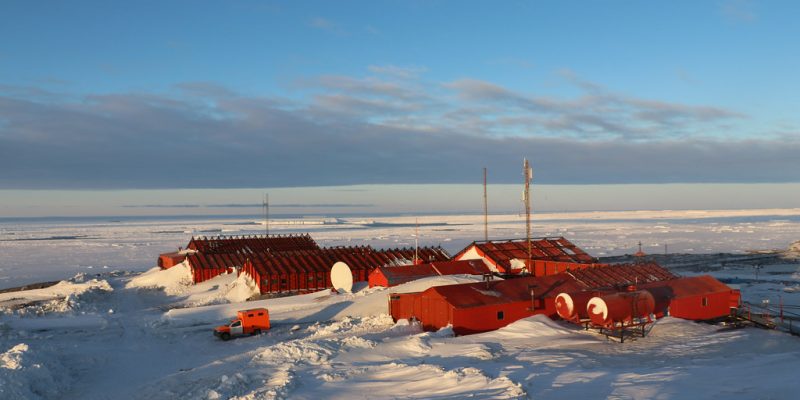Cities in Antarctica: 10 Unbelievable Facts About Life in the Frozen South

Antarctica, often thought of as a vast, inhospitable wasteland of ice and snow, is not a place you’d associate with bustling cities. However, life in the frozen South is more complex than most people realize. While Antarctica lacks permanent cities, it hosts a number of research stations that function similarly to cities, providing shelter, sustenance, and a unique community for scientists, support staff, and even tourists. In this article, we’ll explore 10 unbelievable facts about life in the frozen South and how cities in Antarctica, in their own way, help foster human habitation in one of the most extreme environments on Earth.
Antarctica: A Continent of Scientists, Not Settlers
Though many imagine cities in Antarctica, the continent is predominantly home to research stations, not permanent settlements. These stations serve as the hub for scientific exploration and climate studies. The largest of these is the McMurdo Station, located on the southern tip of Ross Island. With a population of around 1,000 in the summer months, it provides living accommodations, laboratories, and recreational facilities to those working on groundbreaking research projects.
The Population of Antarctica Cities is Transient
In reality, there are no true cities in Antarctica, as the population is composed primarily of temporary residents. The number of people living in these “cities” fluctuates drastically throughout the year. During the austral summer (October to February), the population can soar to 5,000, while in the winter (March to September), it can drop to around 1,000. Most of the residents are researchers who work for a few months before returning home.
Extreme Weather Conditions Shape Antarctic Life
Living in cities in Antarctica is not for the faint of heart. Temperatures can plummet as low as -80°F (-62°C) during the winter, with the harsh winds making the cold feel even more unbearable. The weather can be so extreme that outdoor activities are often restricted, and people are advised to stay inside to avoid frostbite. This makes daily life in Antarctic research stations both challenging and fascinating, as residents must find innovative ways to keep warm and stay safe.
Energy in Cities in Antarctica Comes from Renewable Sources
Antarctica might be known for its cold, but that doesn’t mean it’s devoid of renewable energy resources. Many of the research stations and “cities” on the continent rely on solar panels and wind turbines to generate electricity. In addition to these renewable sources, McMurdo Station also uses a large diesel fuel generator to provide power. Efforts are being made to reduce the environmental impact of these energy sources, but the extreme conditions present unique challenges.
Unique Ecosystems Thrive in the Most Extreme Environment
Cities in Antarctica, or more accurately, the research stations within them, provide a fascinating intersection between human life and nature. Despite the inhospitable conditions, diverse ecosystems of bacteria, fungi, and algae survive in the polar regions. The Antarctic ecosystem is fragile and extremely sensitive to climate changes, which is why scientific study here is crucial for understanding global environmental shifts. These research stations enable scientists to study these resilient organisms in their native environments.
Tourists Visit But Cannot Stay Long
While the majority of Antarctica is off-limits to tourists, some research stations allow limited visits. This opens up the possibility for tourists to experience life in cities in Antarctica, albeit in a very controlled way. Most tourists arrive by cruise ship during the summer months and are not permitted to stay overnight. These visitors may participate in research expeditions or take guided tours, but they are not part of the permanent workforce in these temporary cities.
Infrastructure is Built to Last in Harsh Conditions
Constructing buildings and infrastructure in cities in Antarctica presents unique engineering challenges. Structures must be designed to withstand freezing temperatures, heavy snow loads, and the constant threat of ice erosion. One of the most fascinating aspects of life in these research stations is how the infrastructure is designed to adapt to the shifting ice sheets. Buildings are often raised on stilts to prevent them from being buried by snow accumulation, and materials are specially selected to survive the extreme conditions.
The Role of International Cooperation in Antarctic Cities
Antarctica is governed by the Antarctic Treaty System, which prohibits military activity and ensures that the continent is used exclusively for peaceful purposes and scientific research. This international collaboration is reflected in the various research stations operated by different countries. Cities in Antarctica, though not actual urban centers, often serve as microcosms of global cooperation, with scientists from diverse backgrounds working together to understand the Earth’s natural systems.
Psychological Effects of Living in Antarctica
Living in cities in Antarctica for extended periods can have significant psychological effects on residents. The isolation, extreme cold, and perpetual daylight or darkness (depending on the season) can take a toll on mental health. Researchers are often required to undergo psychological assessments before being deployed to Antarctica, and many stations offer counseling and mental health resources. The unique living conditions mean that those who call these stations home must be resilient and adaptable, qualities essential for survival in such an unforgiving environment.
Antarctic Research Stations Are Key to Climate Change Studies
Cities in Antarctica, although not typical cities, serve as essential hubs for studying climate change and other critical global issues. The vast ice sheets that cover the continent hold invaluable information about Earth’s past climate, and researchers use data collected from the ice to better understand long-term environmental shifts. These research stations are essential for advancing our understanding of the global climate system and predicting future changes that could affect our planet’s ecosystems.
Conclusion
While there are no permanent cities in Antarctica in the traditional sense, the research stations spread across the continent function as isolated, temporary hubs of human activity. These “cities in Antarctica” are critical for scientific exploration, climate research, and international collaboration. Living and working in the frozen South is an extraordinary challenge, but it’s also an opportunity to study the effects of climate change and learn from one of the most extreme environments on Earth. The next time you think about Antarctica, remember that there is far more to this frozen land than meets the eye—human resilience and innovation thrive in the most unlikely of places.
FAQs
Q1.Are there any actual cities in Antarctica?
No, there are no permanent cities in Antarctica. The continent is home to research stations, which function as temporary “cities” for scientists and support staff.
Q2.How many people live in Antarctica?
The population of Antarctica fluctuates between 1,000 to 5,000, depending on the season. The majority are researchers working at various scientific stations.
Q3.What is the coldest temperature recorded in Antarctica?
The coldest temperature recorded in Antarctica was -128.6°F (-89.2°C) at the Soviet Union’s Vostok Station in 1983.
Q4.Can tourists visit Antarctica?
Yes, tourists can visit Antarctica, but they are limited to guided tours of research stations and are not allowed to stay long-term.
Q5.What is the purpose of research stations in Antarctica?
Research stations in Antarctica are used for scientific research, including climate studies, environmental monitoring, and biological studies of the unique Antarctic ecosystem.
Also read: Antarctica Polar Bears: 10 Compelling Reasons They Can’t Be Found There











